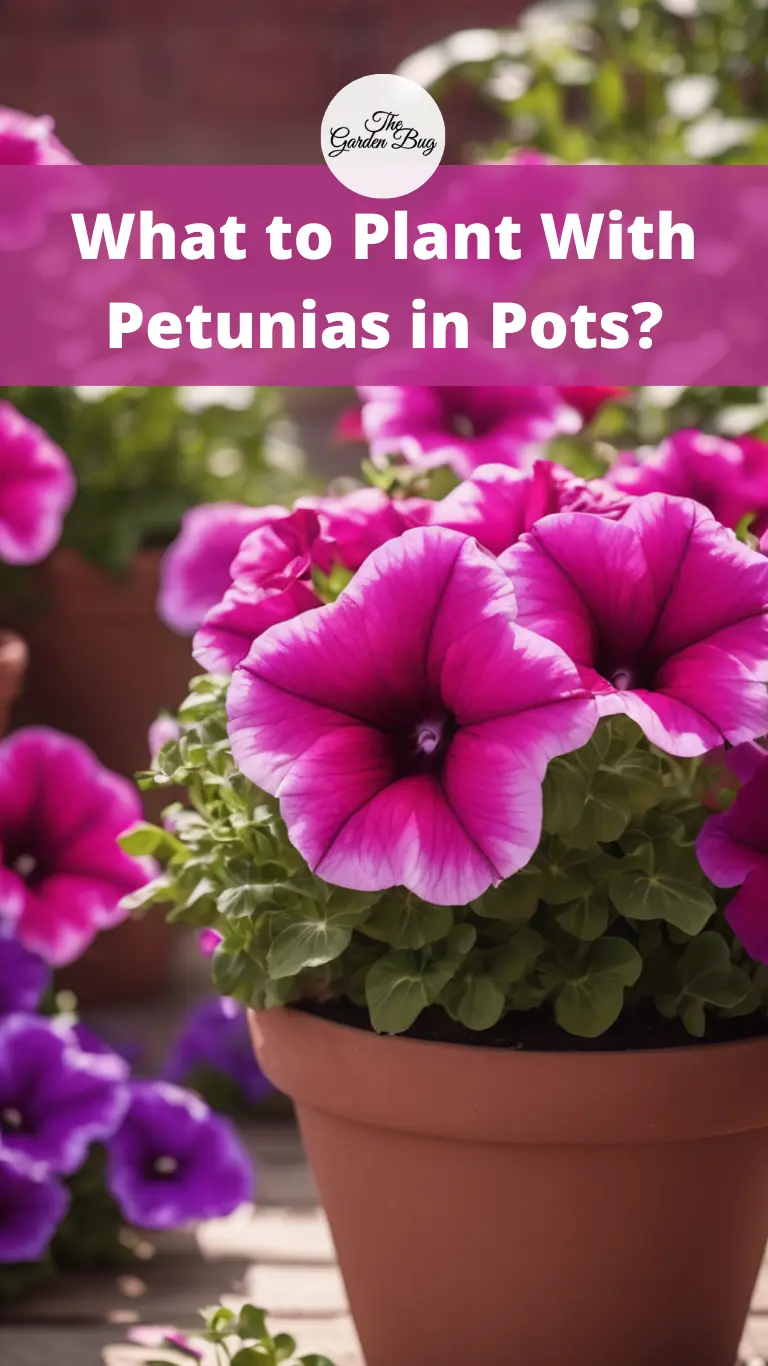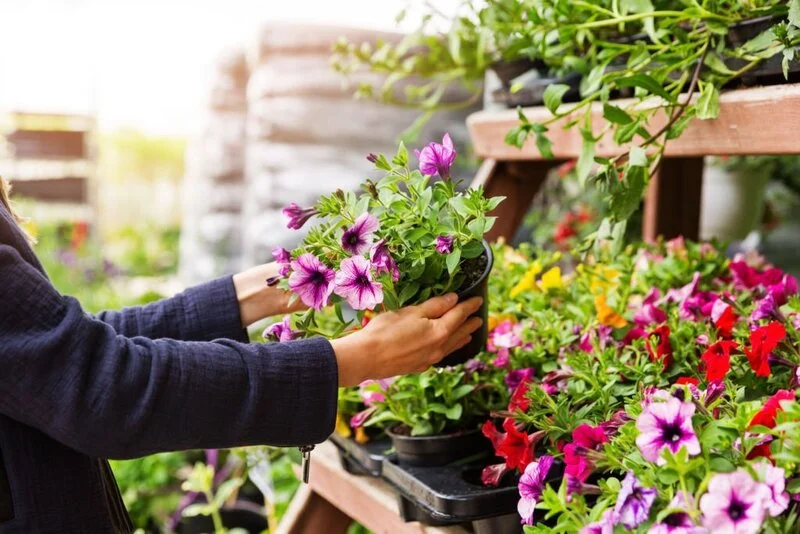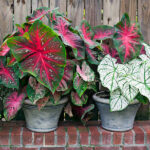Who doesn’t love a vibrant pot of flowers adding color and life to a porch, balcony, or garden? One of the most popular choices for potted plants is the delightful petunia, known for its bright, cheerful blossoms. But, wouldn’t it be nice to add a little more variety to that pot? Just as we humans enjoy a little companionship, so do our plant friends. In this guide, we’ll delve into the delightful world of companion planting with petunias in pots.
- HEALTHY PLANTS: Lemon verbena is a great herb to add to your garden. It has a wonderful lemon fragrance and not to mention is high in antioxidants which can helpful for inflammation!
- GROWTH: Lemon verbena is a fast-growing herb that can grow up to 6ft tall and 8ft wide.
- CARE: Plant lemon verbena in a location with full sun and rich, well-draining loam soil. Water regularly whenever the top of the soil dries out.
- FUN FACT: Lemon Verbena is classified as a shrub and symbolizes sensitivity.
- LIVE PLANTS: Our plants are grown exclusively for Deep Roots and The Three Company, shipped fresh directly from our greenhouse to you!
Understanding Companion Planting
The term “companion planting” might sound a bit fancy, but it’s quite a simple concept, really. It’s all about planting different types of plants close together so they can help each other out. Like a buddy system for plants! Some plants might deter pests that usually bother their plant friends. Others might enrich the soil with nutrients that their companions need. And some just look lovely together, creating a visual feast for the eyes. With the right companions, your petunias can thrive even more beautifully. Ready to meet the potential buddies for your petunias? Let’s get started!
Best Companion Plants for Petunias in Pots
Looking to give your petunias some pot buddies? Here are some top-notch contenders that not only play well with petunias but also complement their beauty.
- Verbena: This is a plant that not only adds a variety of colors but also shares similar care needs with petunias. Their cascading habit makes them excellent for hanging baskets or edges of pots.
- Lobelia: If your petunias are bringing the heat with their vibrant colors, cool things down a little with lobelia’s soothing blue flowers. They also love full sun and well-drained soil just like petunias.
- Sweet Alyssum: This plant produces clusters of small, sweet-smelling flowers. Their trailing habit and love for full sun make them perfect pot buddies for petunias.
- Euphorbia: This plant’s wispy, white flowers create a lovely contrast against the bold colors of petunias. Plus, they enjoy the same light and water conditions.
Remember, the best companion for your petunia might depend on the specific variety you have, as well as the conditions in your location.
- 6-12 in. tall and 1-2 ft. wide, trails up to 2 ft. at maturity
- Partial to full sun (4+ hours) required
- Annual except in zones 9-11, be sure to check your USDA zone to ensure success
- Annuals are 5-8 in. tall at shipment
- Grande containers are 4.25 inches in diameter and tall
Tips for Successful Companion Planting with Petunias
Pairing your petunias with companion plants can create a more visually appealing pot. Here are a few tips to make your companion planting successful:
- Check the care needs: Make sure your chosen companions like the same conditions (light, water, soil) as your petunias.
- Consider size and growth habit: Mix trailing plants with those that grow upright. This adds depth and interest to your pot.
- Think about color: Choose plants with complementary colors to make your pot more eye-catching.
- Give them space: While companion plants can help each other, they also need their own space to grow. Make sure your pot is big enough for all your plant friends.
Remember, gardening is a journey. Don’t be afraid to experiment with different combinations to find out what works best for you and your plants.
Planting Steps for Petunias and Companions in Pots
Ready to get those hands dirty? Let’s walk through how to pot your petunias with their new companions.
- Choose the right pot: Make sure it has good drainage and is large enough to accommodate all the plants you plan to pot.
- Add soil: Use a high-quality potting mix, which is light and fluffy, great for your petunias and companions.
- Plant your petunias: Create a hole in the center and plant your main star, the petunia.
- Add companion plants: Arrange the companion plants around the petunia. Remember to consider their growth habits – place trailing plants near the edge and upright ones towards the back or center.
- Cover with soil: Once you’re happy with the arrangement, fill in with more potting mix. Be sure all roots are covered, but avoid burying the stem.
- Water generously: Give all plants a good soak to help them settle in their new home.
- You will receive (1) 1.5-cubic foot bag of potting soil per purchase.
- Ready for immediate use, no additional ingredients are required. This bag is designed to be ready for planting upon purchase. Plant directly into bag.
- Ingredients like aged forest products and peat moss help increase effectiveness in retaining moisture directly around the roots of plants. Sandy loam, also in Ocean Forest, has excellent drainage properties to prevent the roots sit in stagnant water.
- Ideal for container gardens, houseplants, trees, shrubs, roses, and even seedlings. The rich ingredients in Ocean Forest provide the proper environment for seedlings to become vigorous plants.
- Ingredients include 50-60% aged forest products, sphagnum peat moss, perlite, sandy loam, and fertilizer. Derived from fish emulsion, crab meal, shrimp meal, earthworm castings, kelp meal, and oyster shell.
Caring for Your Potted Petunias and Companions
Taking care of your new potted community is straightforward:
- Water: Keep the soil evenly moist, but avoid overwatering. Stick a finger in the soil – if the top inch is dry, it’s time to water.
- Light: Place your pot where it will receive at least six hours of sunlight each day.
- Feeding: Feed with a balanced plant food about once a month during the growing season.
- Pruning: Regularly deadhead petunias and pinch back companion plants to encourage bushier growth.
Conclusion
There you have it, the easy-peasy guide to planting petunias and companions in pots. With the right care, these plants can create a stunning display that will brighten up any space. Enjoy the process, and remember, gardening is about trying, learning, and most importantly, having fun!







